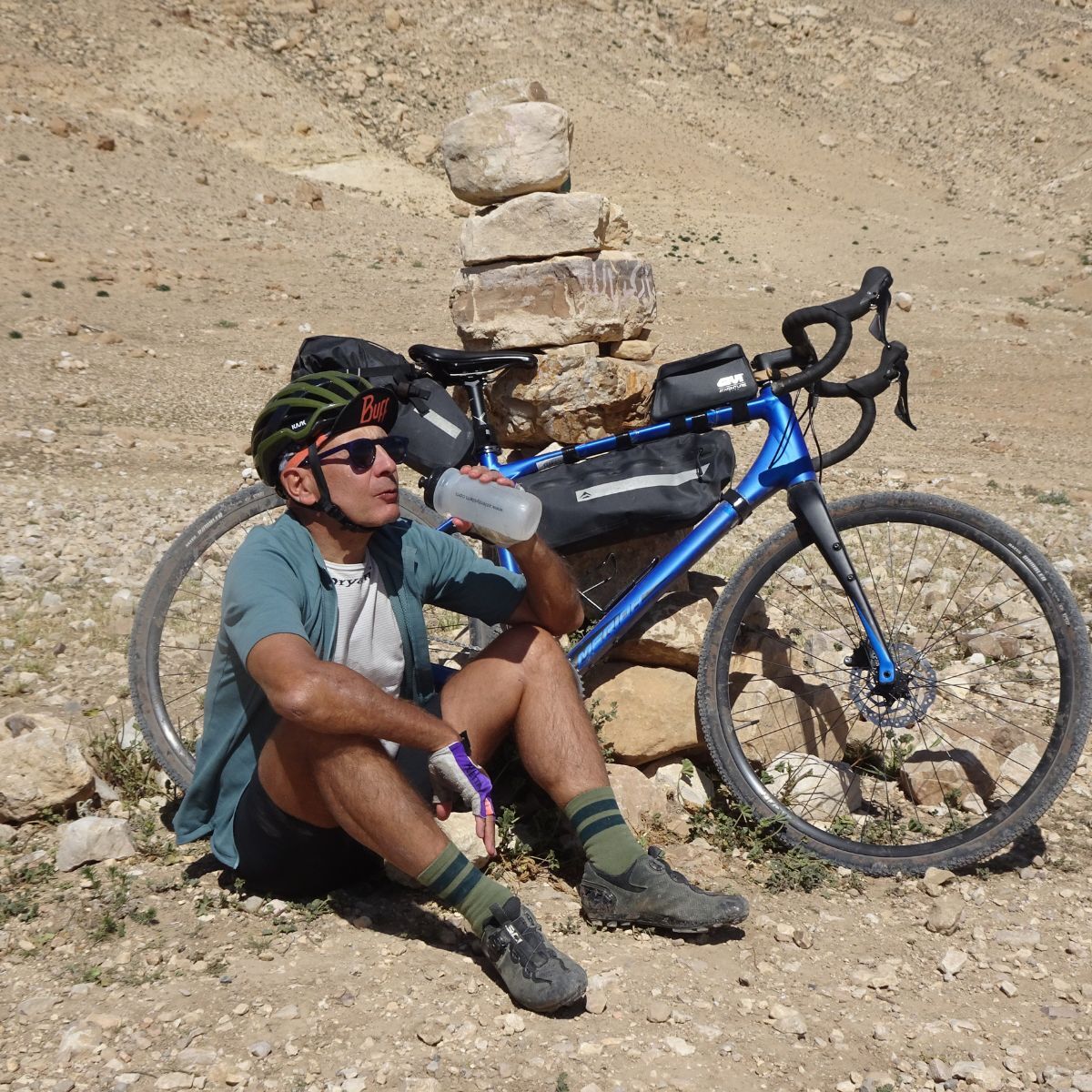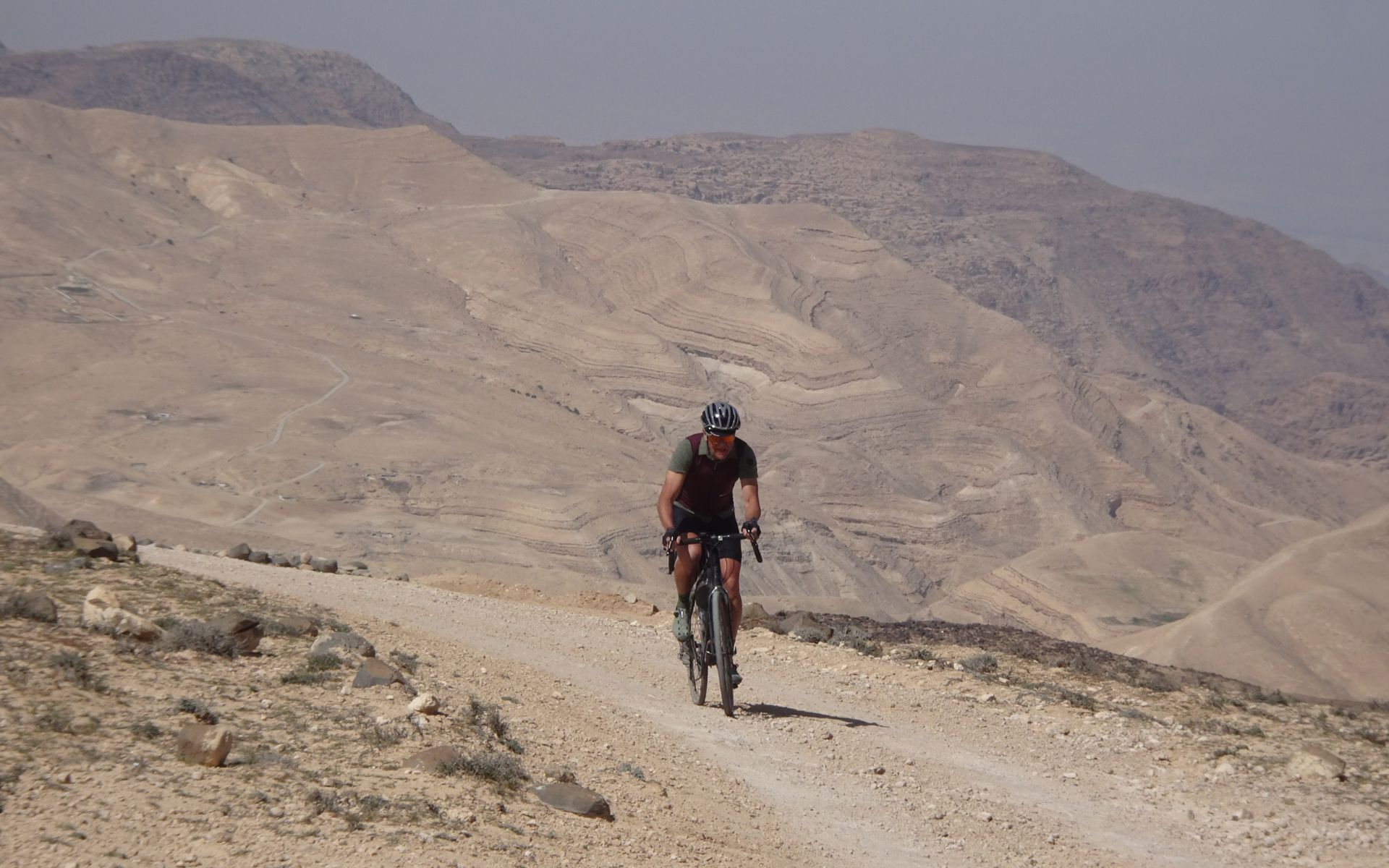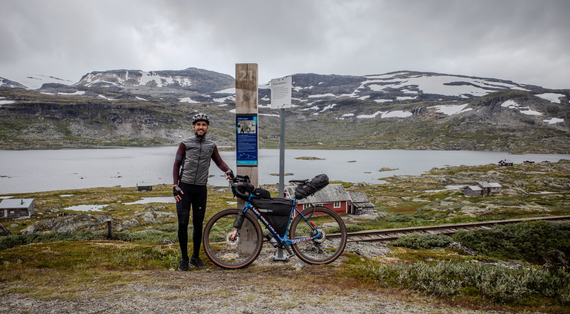Diese Strecke ist über 700 km lang und weist 20.000 Höhenmeter auf. Die Strecke ist fast nie flach und führt in rascher Folge von Asphalt zu kompakten gravel, Steinen und sogar Felsen, auf denen man gezwungen ist, mit dem Rad zu laufen, manchmal sogar bergab. Der Ort ist einer der faszinierendsten Orte der Welt, den man mindestens einmal im Leben besucht haben muss: Wir sind in Jordanien auf dem Jordan Bike Trail, und die Route ist der Nord-Süd-Kamm, der das Land bis nach Aqaba am Roten Meer durchquert.
Die Planer haben darauf geachtet, Abschnitte zu wählen, die zu kleinen Städten oder Dörfern führen, in denen man auftanken und in Hotels übernachten kann, die nicht zu weit voneinander entfernt sind, um den Schwierigkeitsgrad zu senken und das Abenteuer nicht zu extrem zu machen.
Die offizielle Website ist wegen ihres Detailreichtums und ihrer praktischen Vorschläge sehr gut gemacht. Sie schlägt die Unterteilung der Route in 12 Tagesetappen mit einer durchschnittlichen Distanz von etwa 60 Kilometern und einem durchschnittlichen Höhenunterschied von 1.600 Metern vor. Sie gibt auch den genauen Umfang der Steigungen und die Einschätzung des Schwierigkeitsgrads jeder Etappe an, so dass Sie Ihr Programm entsprechend anpassen können.
Unserer Erfahrung nach sind die Führungen genau auf einen einigermaßen erfahrenen und mäßig trainierten Radfahrer zugeschnitten, nicht unbedingt auf einen Leistungsradler. Das Erlebnis ist perfekt für jeden Radfahrer, der sich anpassen kann und es nicht so eilig hat, sein Tagesziel zu erreichen. Die Tour ist auch für E-Bikes geeignet, aber da diese nicht mit dem Flugzeug transportiert werden können, müssen sie bei lokalen Reiseveranstaltern gemietet werden.
Die Erfahrung hat auch einen menschlichen Wert, weil man Dörfer und Gemeinschaften erreicht, die unglaublich gastfreundlich sind. Aber es ist sehr wichtig, respektvoll zu sein und sich bewusst zu machen, dass man sich auf dem Gebiet von Menschen befindet, deren soziale Gepflogenheiten ganz anders sind als die europäischen.
Wenn Sie nicht mindestens zwei Wochen oder mehr Zeit haben, um den Jordan Bike Trail zu fahren, können Sie einen Teil der Strecke absolvieren und dann planen, zurückzukommen und den Rest zu fahren. Man kann die Strecke auf eigene Faust (mit Kocher und Zelt), auf eigene Faust (entlang des offiziellen GPS-Tracks, in Hotels und Pensionen) oder mit lokalen Reiseveranstaltern zurücklegen.
Wir haben uns für Letzteres entschieden und Cycling Jordan hat unsere Reise ganz nach unserem Geschmack gestaltet, abwechselnd in traditionellen Hotels und familiengeführten Betrieben, mit Abendessen, das von Einheimischen gekocht wird, und vielen Gesprächen mit ihnen. Wir haben es nicht ausprobiert, aber in den kleinen Dörfern kann man fragen, wo man sein Zelt aufschlagen kann, und man wird fast immer in den Garten einer Hütte geführt, wo der Besitzer höchstwahrscheinlich anbietet, für einen sehr niedrigen Preis (10/20 €) zu kochen.
Es ist nicht möglich, einige Etappen auf Kosten anderer zu empfehlen: Jeden Tag gibt es eine andere Strecke zu bewältigen, neue Berge zu erklimmen und üppige oder wüste Landschaften zu fotografieren. Das Tote Meer wird uns auf seiner gesamten Länge begleiten, erst von oben gesehen, dann in die Pedale getreten, mit dem Wissen, dass wir uns am tiefsten Ort der Erde auf -430 m befinden.
Auf der Strecke gibt es viele Sehenswürdigkeiten, an denen man Halt machen kann. Es gibt mittelalterliche Burgen, die von den Kreuzfahrern erbaut wurden und von denen einige gut restauriert sind, es gibt Naturgebiete wie Dana, wo man eine zauberhafte Mischung aus Landschaften und trekking findet, und es gibt Orte, die dem Katholizismus heilig sind, wie die katholische Kathedrale auf dem Gipfel des Berges Nebo, wo vor kurzem prächtige Mosaike restauriert worden sind. Von hier aus hatte Moses eine Vision des Gelobten Landes, mit Jericho und Jerusalem am Horizont. Weiter südlich erreicht der Jordan Trail Petra, die unglaubliche archäologische Stätte, die von den Nabatäern in vorrömischer Zeit angelegt wurde. Das Gebiet ist weitläufig, kann aber nicht mit dem Fahrrad befahren werden. Der Besuch eines der "10 Weltwunder" ist einen ganzen Tag wert und ein unvergessliches Erlebnis, das wegen der in den Fels gehauenen Stufen fast so anspruchsvoll ist wie die vorherigen Radtouren.
Jenseits von Petra gehen die steilen Berge in falsche Hochebenen über, aber vor allem beginnen Sie, auf teilweise sandigen Pisten in die Pedale zu treten, wo Sie schnell lernen müssen, mit dem weichen ground umzugehen, der Ihre Räder bis zum Blockieren einsinken lässt. Wenn Sie in einer Gruppe in die Pedale treten, wird es ein lustiger Tag, an dem Sie nach der besten Navigation und der schnellsten Fahrt suchen, um Ihre ausgefallenen Gefährten zu überholen, umgeben von wunderschönen, kargen, dunklen Bergen. Einer der natürlichen Höhepunkte ist der Eingang zum Wadi Rum, einem langen sandigen Canyon, in dem man unbedingt anhalten sollte, um die antiken Felsgraffiti zu bewundern oder auf den riesigen, von der Winderosion geformten Hängebögen zu wandern. Im Inneren ist es unmöglich, mit dem Fahrrad zu fahren, und nur die Geländewagen der Zeltlager sind erlaubt. Bei der Erkundung des kilometerlangen Geländes kann man hohe, von Pisten unberührte Dünen sehen, Berge, die den Weg unter sich überragen, und viele Einblicke in die echte Wüste, in der Szenen aus großen Filmen wie Lawrence von Arabien, Indiana Jones und der letzte Kreuzzug, Der Marsianer, Star Wars, Mad Max und vielen anderen gedreht wurden.
Die Nacht im Wadi Rum gehört zu den unvergesslichen Erlebnissen, die man mit den Füßen im Sand" in funktionalen Zeltlagern verbringt, die als einzige Einrichtungen in diesem Gebiet erlaubt sind. Hier erlebten wir absolute Stille, einen Sternenhimmel, soweit das Auge reicht, in Öfen unter dem Sand gekochtes Essen und das Schauspiel der sich in rascher Folge ändernden Farben in der Morgen- und Abenddämmerung.
Nur noch eine Etappe, dann erreichen wir Aqaba am Roten Meer, das durch den vielen Sand erschwert wird, aber durch die vielen freilaufenden Kamele, die oft in Herden lautstark neben den Radfahrern herlaufen, und die letzten der fotogenen Berge, die uns auf den letzten Etappen begleitet haben.
Alles, was Sie über Jordanien wissen müssen: https://it.visitjordan.com/
















